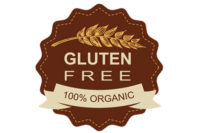In my first column in February, I highlighted the rapid growth of the gluten-free market and provided an overview of conditions that require a gluten-free diet for treatment, as well as other reasons why consumers may be following it. This month, which is National Celiac Awareness Month, I’m featuring information about the gluten-free diet, including foods and ingredients allowed and those to avoid.
For people with Celiac disease and non Celiac gluten sensitivity, the only treatment is a strict gluten-free diet. Gluten is the general name for a group of proteins found in the grains wheat, rye and barley. All types of wheat including spelt, kamut, einkorn, emmer, faro, durum, bulgur and atta, as well as wheat starch, wheat flour, wheat bran, wheat germ and hydrolyzed wheat protein must be eliminated. In addition, rye flour, triticale (a cross between wheat and rye), barley malt, barley malt flavoring, barley malt extract, barley malt syrup, malt vinegar, malted milk and brewer’s yeast are also off limits.
Historically, oats were on the restricted list of grains because the avenin protein was thought to trigger the same reaction as wheat, rye and barley. However, research over the past 17 years has found that moderate consumption of pure, uncontaminated oats is safe for the majority of individuals with Celiac disease. There are companies in North America and Europe that produce these specialty gluten-free oats grown on dedicated fields using dedicated harvesting and processing equipment and are tested for gluten using the highly sensitive R5 ELISA test. It should be noted that a small percentage of individuals with Celiac disease may not tolerate even these pure oats. The mechanism for this intolerance isn’t known. So it’s important for those with Celiac disease to be well established on the gluten-free diet for at least six months before introducing gluten-free oats, and consult with their physician and dietitian to monitor their response to oats. For more information about oats, see http://www.glutenfreediet.ca/about_gf.php
Following a gluten-free diet can be very challenging because gluten is found in such a wide variety of foods such as breads, muffins and other baked products, cereals, pastas, soups, sauces, salad dressings, seasonings, snack foods, prepared meats, candies, chocolates, barley-based beer, ale and lager, as well as some nutritional supplements and medications.
Fortunately, there are many naturally gluten-free foods including fruits, vegetables, plain meat, fish, poultry, eggs, fish, nuts, seeds, milk, yogurt, cheese, as well as a variety of gluten-free grains, flours, cereals and starches (see sidebar). Beer made from gluten-free grains, wines, distilled alcoholic beverages and distilled vinegar are also allowed. Even if a distilled product is made from a gluten-containing grain, the gluten protein is removed during the distillation process, whereas beer derived from barley is only fermented, and the gluten protein isn’t removed during production. Because the gluten-free diet is so complex, it’s essential that individuals consult with a registered dietitian to ensure they are eliminating all sources of gluten and consuming a nutritious gluten-free diet.
With the growing number of people following a gluten-free diet, there has been an explosion of gluten-free specialty products available in health food and grocery stores, as well as direct from manufacturers and internet retail stores. At the Natural Product Food Expo in Anaheim in March, I sampled hundreds of gluten-free products. In light of this, next time, we’ll highlight some of these products and discuss nutritional concerns with gluten-free products. Until then, I encourage you to visit my website at glutenfreediet.ca for more information about the gluten-free diet, Celiac disease and nonceliac gluten sensitivity.
|
Gluten-Free Grains, Flours, Cereals and Starches |
|



